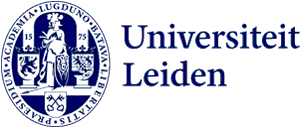
Work balance: 5 tips from education coaches
Work balance is an important issue within the Faculty of Humanities. Education coaches Astrid Van Weyenberg and Maarten van Leeuwen also deal with this regularly during their coaching sessions with lecturers. They have listed their most important tips.
Astrid and Maarten: The workload is experienced as high by many teachers, sometimes because they teach a lot, sometimes because they do research in addition to their teaching and also have administrative tasks. Not everything is within the teachers' sphere of influence and we think it is important to recognise that. However, preparing lectures differently can help limit the time that goes into teaching.
Of course it is important to prepare lectures properly. At the same time, it is necessary to set limits to that preparation. We notice (and of course know from our own experience) that in particular lecturers who are just starting out tend to think that the more time they put into preparing a lecture, the better it will be. They make sure they have read up widely, that they have lots of notes and that they have answers ready for all possible questions from students. This gives a sense of control and security. Because lecturing, especially in the beginning, can often be very nerve-racking.
Yet experience shows that lectures get better if you dare to let go of control a little. Many experienced lecturers will agree that teaching well and setting limits on your teaching preparation time are not mutually exclusive. Here are a few tips:
- Let go of the idea that a two-hour lecture also requires a prepared story of two hours and try to think more in ‘blocks’. What are the topics you want to make sure you cover in the lecture and how can you structure them? This will also prevent an unexpected question from a student about something you didn't really want to cover until the end from throwing you off track. Have a number of ‘blocks’ ready and think about how best to get students to work with their content. Rather than a narrative, it may help to create a visual structure for a lecture, with that day's central learning objective in the middle, and around it everything you want to touch on and how you want to approach it.
- Alternate knowledge transfer with activating work forms in which students themselves deal with the material. For example, you could prepare a twenty-minute introductory talk and then have students work in groups on the basis of discussion questions. After that group work, you can discuss the students' main findings, and at the end you can give a short conclusion (which you prepare in advance or improvise). That way, you prepare a talk of half an hour total instead of a two-hour talk. This not only saves a lot of time, but this alternation of working methods is also a lot more dynamic for the students than if they remain in passive listening mode for the entire lecture.
- Work according to the flip-the-classroom principle, encouraging students to engage with the material prior to the lecture so that they come to the lecture well prepared. For example, have students post discussion questions on Brightspace in advance that they should explain during the lecture, or have them bring a case that is relevant in the light of the literature they have studied. You can also get them to them prepare a short pitch in groups for others to respond to. In short, put the students to work and make use of this in the lecture. This not only saves you time, but it also helps to better tailor the content to the students' level and interests. Moreover, this approach encourages active and critical processing of the lecture material and helps make discussions more lively.
- Think carefully about the structure of the study guide and make clear agreements with your students at the start of the lecture series. For example, if you want students to prepare something before a lecture, incorporate this as a pass/fail assignment in the study guide or work with a 'participation grade' that forms a small part of the final grade. Or inform your students that every week you will ask someone to explain some aspect of the material: this encourages them to come to the lecture prepared and creates a dynamic in which students are co-responsible for the content and for the success of the course. This way, not all responsibility lies with you, which can save preparation time.
- Don't be afraid of improvisation, but trust that you can respond to unexpected circumstances as well. Also, don't be too afraid to say you don't know something, you’ll have to look it up and then come back to it, or to play something back to the students: ‘That’s an interesting issue, let's all ponder on it for next week, then we'll come back to it.
It is an open door, but when preparing teaching, it is crucial that you are clear about the core of what you want to cover in your lecture and what the learning objectives are. Then think of good teaching methods to go with it. It is more useful to think carefully about teaching methods than to write out a whole lecture at random. That is not to say that knowledge transfer cannot be useful, but alternate it with more active teaching methods so that you motivate your students and keep your own preparation time within limits. More information on activating forms of teaching can be found here.
If you want to discuss preparing and delivering lectures with colleagues, you can register here for intervision meetings. You can also start a peer review group with your colleagues; we will be happy to advise you on this too.
Maarten van Leeuwen and Astrid Van Weyenberg
Educational coaches, Faculty of Humanities
